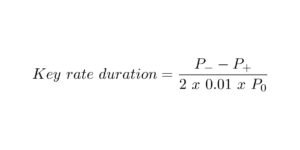Describe Kanban.
A method of inventory control used in just-in-time (JIT) production is called Kanban. Taiichi Ohno, a Toyota industrial engineer, named the system after the colored cards used to track production and place orders for additional shipments of components or materials when they run out. Since “visual card” is how the Japanese word “kanban” is translated, the kanban system essentially uses visual signals to suggest actions necessary to maintain a process’s flow.
Knowing How to Use the Kanban System
One way to conceptualize the kanban system is as a signal and response system. An operable station will include a visual signal indicating how much has to be ordered from the supplier when an item is running low. The provider supplies the precise quantity required by the individual utilizing the parts, who orders the quantity shown by the Kanban.
For instance, a kanban could be positioned in the stack above the final ten bags when an employee is bagging goods on a conveyor belt. The floor runner receives the card to fetch additional bags from the worker when he reaches it. A station closer to the supply room might have the Kanban at five bags, whereas one farther away might have fifteen. During the belt’s operation, the bag flow and card placement are regulated to ensure no station is left without a bag.
The kanban system is simple to use in a factory and can also be utilized when buying merchandise from outside vendors. The Kanban system gives buyers and suppliers unprecedented visibility. One of its primary objectives is to prevent excess inventory from building up at any production line stage. As inefficiencies are found and eliminated, supply points limit the quantity of goods that can be held before reducing them. Every time an inventory limit is surpassed, there is an inefficiency that needs to be fixed. According to priority, color-coded cards emerge as parts or material containers are emptied, enabling the manufacturing and transportation of additional items before a hold-up or shortage occurs. A typical setup is a two-card system. P-kanban production cards permit the workstation to create a set quantity of goods and order components or materials once they are sold or used. T-kanban transportation cards authorize the transit of containers to the next workstation on the production line.
Core Kanban Procedures
The fundamental ideas of the Kanban method specify how procedures should be carried out and how team members should participate in them.
Make Workflows Visible
A visual representation of the process is essential to Kanban. Visual signals that make each activity easily recognized must be used to demonstrate the process step by step, whether done through technology and software or with natural, tactile cards. The goal is to lay down every stage, the expectations, and the assignments for each person in detail.
One outdated (but still in use today) technique was to write down kanban tasks on sticky notes. You may color each sticky note differently to represent a particular job item. After that, these assignments would be grouped into swim lanes—defined parts that combine related work to produce a better-managed project. Nowadays, inventory management software is typically in charge of controlling the kanban process.
Cease Work
Because Kanban is based on efficiency, reducing the quantity of work in progress is its primary objective. Before starting a new task, teams are urged to finish previous ones. Doing this ensures that future dependencies can be begun sooner and that staff members and other resources aren’t waiting around inefficiently to start tasks since they are dependent on others.
As a corporation moves through the kanban process, it must determine internally how much WIP is appropriate to be carrying. This is frequently related to the number of workers involved in the process; the number of items that can be worked on simultaneously decreases with the number of personnel assigned to a project. This restriction also tells other departments or teams that they should be mindful of what other teams ask of them because every group of people may be subject to a working restriction.
Control Workflows
A business will be able to pinpoint its strengths and weaknesses as it moves through a process. Occasionally, obstacles are not conquered, or objectives are not reached; in these situations, the team’s responsibility is to control the workflow and gain a deeper understanding of the shortcomings that must be fixed.
One of the most critical aspects of Kanban is to spot bottlenecks early on and remove them. Forecasting output and resource use are part of this. When a process becomes more predictable, it will be simpler for a business to commit to customers or to fully scale back unnecessary resources to make operations even more efficient.
Stated Regulations
Processes are frequently specified precisely as part of the visual representation of workflows. When Kanban cards are allocated to specific individuals, departments can readily comprehend the expectations set for their teams. These cards also clearly define who is responsible for each task. Clearly defined policies will help all employees know exactly what is expected of them, what needs to be checked off on a checklist before moving on, and what happens when one stage ends and another begins.
Put Feedback Loops in Place
Businesses that use the Kanban approach frequently collect data, examine how the process operates, and make adjustments to enhance it even further. Thanks to this feedback loop, employees may continuously improve and make tiny, easier-to-adapt enhancements. Either positive or negative feedback is possible. The kanban technique aims to identify errors early in the process and address them promptly so that the organization may change course and address inefficiencies before they worsen.
Boost Cooperation
Using the kanban approach requires people to depend on each other because jobs are divided into tiny kanban cards. While certain people, frequently on separate teams, must work together to identify and promptly address problems, others must band together to negotiate transitions between swim lanes. Changes made to the process under Kanban must be widely communicated because they may have a more significant effect in other areas.
Board of Kanban
Kanban boards, which are organizational structures that precisely delineate the components of a process, are employed in the Kanban process. Lists, cards, and boards are the three main components of a kanban board.
A kanban board is the broadest representation of a process that arranges several components of a workflow. For instance, a business might use separate kanban boards for its many divisions (marketing, finance, etc.). To compile pertinent procedures into a single workspace or taskboard area, utilize a kanban board.
The tasks listed on each board are called kanban lists. For instance, as kanban lists frequently depict many production stages within a similar field, a manufacturer might have a list item for each stage of the manufacturing process. Kanban lists can also flow from one task to the next; this is common when one task ends and another begins with the following action item once the previous list item is finished. Finally, kanban cards reside in lists and show the most minor, specific actions required to finish the list. The particular things on these cards need to be done to finish the list. For instance, a company needs to contact the supplier, verify the availability of raw materials, place the order, receive the inventory items, and start production. Further refining these processes can create even more specific kanban cards representing smaller tasks.
The example below shows a pull or kanban system with clearly defined tasks, swim lanes, and a general task flow illustration.
Systems for Electronic Kanban
Electronic kanban systems are widely used in supply chains to facilitate real-time demand signaling. ERP (enterprise resource planning) systems can be connected with these e-kanban systems. These systems use digital cards, lists, and kanban boards to share process status information between departments.
Among the manufacturers using e-kanban systems are Toyota, Ford Motor Company, and Bombardier Aerospace. While these electronic systems still provide visual signals, they can typically automate some processes, like conveyance through the factory or even the submission of purchase orders.
Kanban vs. Scrum
Both Scrum and Kanban are methods that make businesses run more smoothly. They all take somewhat different routes to reach that efficiency, though. Scrum techniques impose defined timescales on modifications during which particular changes are made. Changes are made continuously when using Kanban.
The scrum technique divides work into well-defined, timed sprints that must be completed in a specific way. Each sprint has a start and an end. There shouldn’t be any adjustments or departures from these deadlines or responsibilities. Product owners or scrum masters are in charge of the process, and velocity or anticipated capacity is frequently used to gauge scrum.
On the other hand, Kanban is more adaptable since it continuously modifies its approach by examining past decisions. Teams establish their rhythms or cycles, which frequently alter as necessary. Work-in-progress, throughput, and cycle time are the three metrics Kanban uses to gauge success.
Advantages of Kanban
The concept of Kanban has several advantages, from favorable effects on customers to internal efficiencies.
Kanban is a tool used to visualize tasks and process flow. Because of this, Kanban increases the flow of tasks and goals’ visibility and transparency. Project participants may better understand the flow of tasks and the significance of linked phases if steps are illustrated together with the sequence in which they must occur.
Because Kanban aims to be more efficient, businesses that adopt it frequently report quicker response times. This entails expedited manufacturing procedures, packing and handling, and client delivery schedules. This lowers the carrying costs for the company (i.e., insurance, storage, and obsolescence risk) and turns over cash more quickly for better use.
Businesses that implement kanban techniques might also be more aware of what’s coming next. Companies may better understand risks, obstacles, or challenges that may have slowed the process by laying out the tasks and future actions. Alternatively, businesses can strategically prepare to address these shortcomings and deploy resources to overcome obstacles before they impede workflows.
Ultimately, Kanban aims to enhance the quality of customer service. Customers may pay less for services that are more effective and waste-free. Clients might receive their goods more quickly using speedier processes. Being aware of procedures may allow clients to communicate with customer support more quickly and receive resolutions more quickly.
The drawbacks of Kanban
For certain businesses, Kanban cannot be used or is impractical to deploy. In the first place, Kanban depends on stability; an organization needs a predictable process that cannot significantly change. Businesses that operate in dynamic settings with erratic activity levels could find it challenging to implement Kanban.
Just-in-time, scrum, and other production approaches are frequently linked to Kanban. For this reason, if a business adopts kanban methods, it might not profit fully. When examining kanban cards, for instance, a business may be able to predict when it will want raw materials. But if the business does not use just-in-time inventory, it might be paying unnecessary costs to carry the raw materials when they are not in use.
For several reasons, Kanban is also required to be updated often. Firstly, the team assessing the next steps might be unable to accurately determine where the team is if tasks are not checked off as finished. Second, team members must know how much time is allotted to their task and what future deadlines depend on the current task, as there are no timing assessments for distinct phases.
What constitutes a Kanban rule?
Companies using the Kanban method must continuously enhance their operations, give employees feedback loops, and try to use resources as efficiently as possible. Companies implementing Kanban must assign tasks to swim lanes, visually represent processes, and ensure that team members discuss changes throughout the project or process.
Why is Kanban used?
Kanban aims to save businesses money, time, and other resources by minimizing downtime between activities. Furthermore, Kanban aims to identify bottlenecks before their occurrence, enabling proactive measures to be implemented to prevent work-in-progress from languishing while issues are resolved.
Is Kanban lean or agile?
Kanban connects lean and agile frameworks. It is flexible because procedures are shown graphically before they happen. This implies that adjustments can be made before problems arise. Kanban is also a pull system, meaning that work is pulled through the process when each previous step is finished. Kanban strives to have enough inventory moving through a manufacturing process instead of having inventory build up from stage to stage.
The Final Word
A system called the Kanban approach seeks to reduce waste, downtime, inefficiencies, and bottlenecks throughout a process. Boards, lists, and cards that illustrate departmental duties represent projects visually. When implemented properly, Kanban can reduce manufacturing costs, use personnel better, enhance customer satisfaction, and shorten delivery times.
Conclusion
- You can use Kanban, which means “sign” in Japanese, to keep track of your supplies and buy new shipments of parts and materials for just-in-time (JIT) production.
- An industrial engineer at Toyota named Taiichi Ohno came up with Kanban. It uses visual cues to tell people how to keep a process moving.
- One of Kanban’s main goals is to keep the production line from having too much extra material.
Kanban also tries to avoid delays by encouraging people and groups to talk to each other and share information. - If Kanban is used correctly, it could lead to lower costs, happier customers, more efficient processes, and a lower chance of problems that were not planned for.




















































